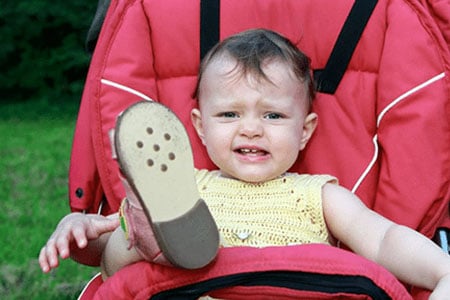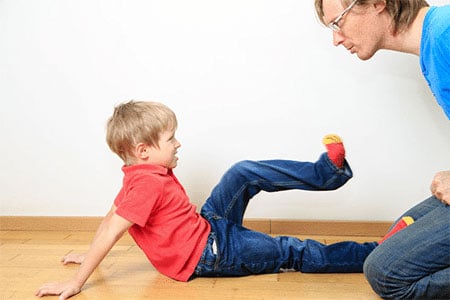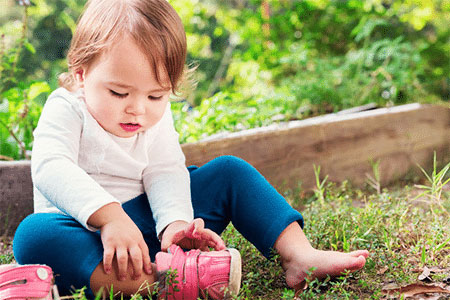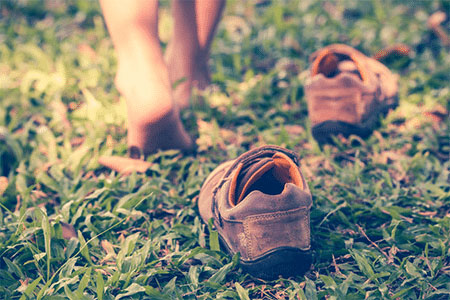Is Your Child Refusing to Keep the Shoes On? – Let’s Stop the Struggle!

Does your child refuse to keep their shoes on — pulling them off moments after you’ve put them on? Many kids struggle to explain what’s wrong, often saying things like, “They just don’t feel right.” As a parent, it can be frustrating not knowing whether the issue is discomfort, sensory sensitivity, or simply a poor fit. As a passionate shoe fitter, I’ll help you understand the most common reasons children reject their shoes — and more importantly, how to fix the problem so your child feels comfortable and supported all day long.
Top 4 Reasons Kids Refuse to Wear Shoes
There are several reasons why children might refuse to wear shoes, and identifying the cause is crucial in addressing the problem effectively. Here are some of the most common reasons:
First Reason: Discomfort and Poor Fit. One of the most common reasons children take their shoes off is discomfort. Shoes that are too tight, too loose, or simply don’t fit right can cause irritation. Children are very sensitive to physical discomfort, and they might not have the words to express it. Instead, they show their discomfort by removing their shoes.

Make sure your child’s shoes provide enough space for the toes to wiggle and a secure, but not tight, fit around the heel—this is key to avoiding blisters and discomfort. To make things easier, I created a Virtual Shoe Fitting Service that helps you identify your child’s exact foot shape (narrow, medium, wide, or extra wide) and the size they should actually be wearing.
Second Reason: Sensory Sensitivities. Some children have sensory processing issues, which means they might be hypersensitive to certain textures or sensations. The feeling of shoes on their feet might be overwhelming or unpleasant, leading them to take them off as soon as possible.

As a seasoned shoe fitter, I’ve discovered that some children’s shoes are specifically designed with sensory needs in mind—featuring seam-free interiors, soft materials, and extra cushioning to keep feet comfortable and irritation-free. These thoughtful details can make a world of difference for kids with sensory sensitivities.
Third Reason: Desire for Independence. Children, especially toddlers, are at a stage where they start to assert their independence. Removing shoes can be a way for them to express control over their own bodies and choices. It’s important to recognize this behavior as a normal part of their development.

Choose shoes that are simple for your child to put on and take off—like styles with Velcro straps or slip-on designs. These options promote independence, reduce daily struggles, and help make getting dressed a smoother, stress-free experience for both of you.
Fourth Reason: Natural Curiosity. For some children, taking off their shoes is simply an act of curiosity. They might be fascinated by the process of removing their shoes or curious about how their feet feel without them. This is a part of their exploratory nature.

Children’s feet come in all shapes and sizes, and it’s essential to consider this when selecting shoes. Some children may have wide feet, high arches, or flat feet, and each requires a specific type of shoe for optimal support and comfort.
Are You Looking for Specific Shoe Recommendations?
Put your child’s shoes on and ask them to point to the exact spot where they feel discomfort. This simple step can reveal whether the issue lies in the toes, heel, arch, or another area. Once you’ve identified the trouble spot, feel free to email me with the details — I’ll gladly help you find a pair of shoes that fits comfortably and supports your child’s needs.
Getting the Correct Types of Socks – Seamless and Breathable
The right socks can make a significant difference in your child’s comfort and willingness to wear shoes. Opt for seamless and breathable socks to reduce friction and prevent irritation. This is particularly important for children with sensory sensitivities.

Many parents share how stressful and emotional it can be every time they need to leave the house and it’s time to put shoes on their child. With the start of the school year, I’ve heard from several families who say just getting their child through the classroom door with shoes on feels like a daily battle. Please know you’re not alone — and be patient as you search for a pair of shoes that truly works. If your child is resisting, there’s usually a valid reason behind.

